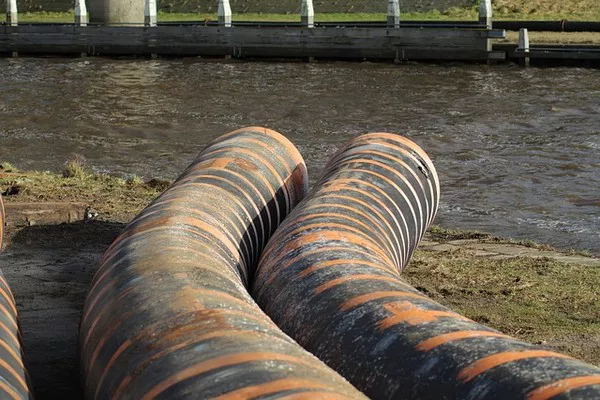Wastewater treatment is a crucial process that ensures the safe disposal or reuse of water contaminated by human, industrial, or agricultural activities. This comprehensive treatment involves multiple steps, each designed to remove specific pollutants and contaminants from the wastewater before it is released back into the environment or reused. Here, we delve into the three primary steps of wastewater treatment, highlighting their importance and the technologies involved.
1. Primary Treatment: Removal of Solids and Grease
The initial stage of wastewater treatment, known as primary treatment, focuses on the physical separation of solids and some organic matter from the wastewater. This step is essential as it reduces the load on subsequent treatment processes and prevents clogging and damage to equipment further downstream.
Processes Involved:
Screening: Wastewater passes through screens to remove large debris such as sticks, rags, and plastic materials. This prevents damage to pumps and equipment in later stages.
Sedimentation: After screening, the wastewater flows into large sedimentation tanks or clarifiers where the velocity of the water is reduced. This allows heavier particles, such as sand, gravel, and other suspended solids, to settle at the bottom as sludge.
Skimming: In some facilities, fats, oils, and grease (FOG) are removed from the surface of the sedimentation tanks using mechanical skimmers or manual methods. This helps prevent blockages in pipes and reduces the potential for anaerobic conditions that produce foul odors.
Technological Advances: Modern primary treatment facilities may incorporate advanced screens with automatic cleaning mechanisms and improved sedimentation tanks that optimize the settling process. Additionally, automated skimming systems enhance efficiency and reduce labor requirements.
2. Secondary Treatment: Biological and Chemical Processes
Following primary treatment, the wastewater undergoes secondary treatment, which focuses on the removal of dissolved and suspended biological matter that escapes primary processes. This stage is crucial for reducing organic content and ensuring that the effluent meets regulatory standards before discharge.
Processes Involved:
Aeration: Wastewater is mixed with air and microorganisms in aeration tanks. The microorganisms, typically bacteria, break down organic matter into carbon dioxide, water, and more microorganisms. This process requires oxygen, which is supplied through diffusers or mechanical aerators.
Activated Sludge Process: This is a common method where the wastewater and activated sludge (a mixture of microorganisms and organic matter) are mixed in aeration tanks. The activated sludge consumes organic pollutants as food, facilitating their removal from the water.
Clarification: After aeration, the mixture flows into secondary clarifiers where the activated sludge settles out. Some of the sludge is returned to the aeration tanks to maintain an optimal microbial population, while excess sludge is removed for further treatment or disposal.
Technological Advances: Advances in secondary treatment include the use of advanced aeration systems that improve oxygen transfer efficiency and reduce energy consumption. Automated monitoring and control systems optimize the treatment process by adjusting aeration rates and sludge recycling based on real-time water quality data.
3. Tertiary Treatment: Polishing and Advanced Filtration
The final stage of wastewater treatment, tertiary treatment, involves additional processes to further purify the effluent before it is discharged into natural water bodies or reused for non-potable purposes. This step is essential for meeting stringent water quality standards and ensuring environmental protection.
Processes Involved:
Filtration: The wastewater passes through sand, gravel, or multimedia filters to remove fine suspended particles and residual organic matter. Filtration improves clarity and reduces the potential for pathogen transmission.
Disinfection: To eliminate harmful pathogens such as bacteria and viruses, treated water undergoes disinfection. Common methods include chlorination, ultraviolet (UV) irradiation, and ozonation. These methods effectively kill or deactivate pathogens to ensure the safety of water intended for reuse or discharge.
Nutrient Removal: In some cases, nitrogen and phosphorus compounds are removed through biological or chemical processes to prevent eutrophication (excessive algae growth) in receiving waters.
Technological Advances: Advanced tertiary treatment technologies include membrane filtration systems that provide superior removal of fine particles and microorganisms. UV disinfection systems offer a chemical-free alternative to chlorination, reducing environmental impact and improving water quality.
See Also 3 types of disinfection treatment in waste water treatment
Conclusion
Wastewater treatment is a multifaceted process that involves a series of critical steps to ensure the safe and sustainable management of water resources. From primary removal of solids and grease to secondary biological processes and advanced filtration in tertiary treatment, each stage plays a vital role in purifying wastewater to meet regulatory standards and protect the environment. Continued advancements in technology and innovation will further enhance the efficiency and effectiveness of wastewater treatment, contributing to global efforts in water conservation and pollution prevention. By understanding and implementing these three steps of wastewater treatment, communities and industries can mitigate environmental impact and promote the responsible use of water resources for generations to come.

